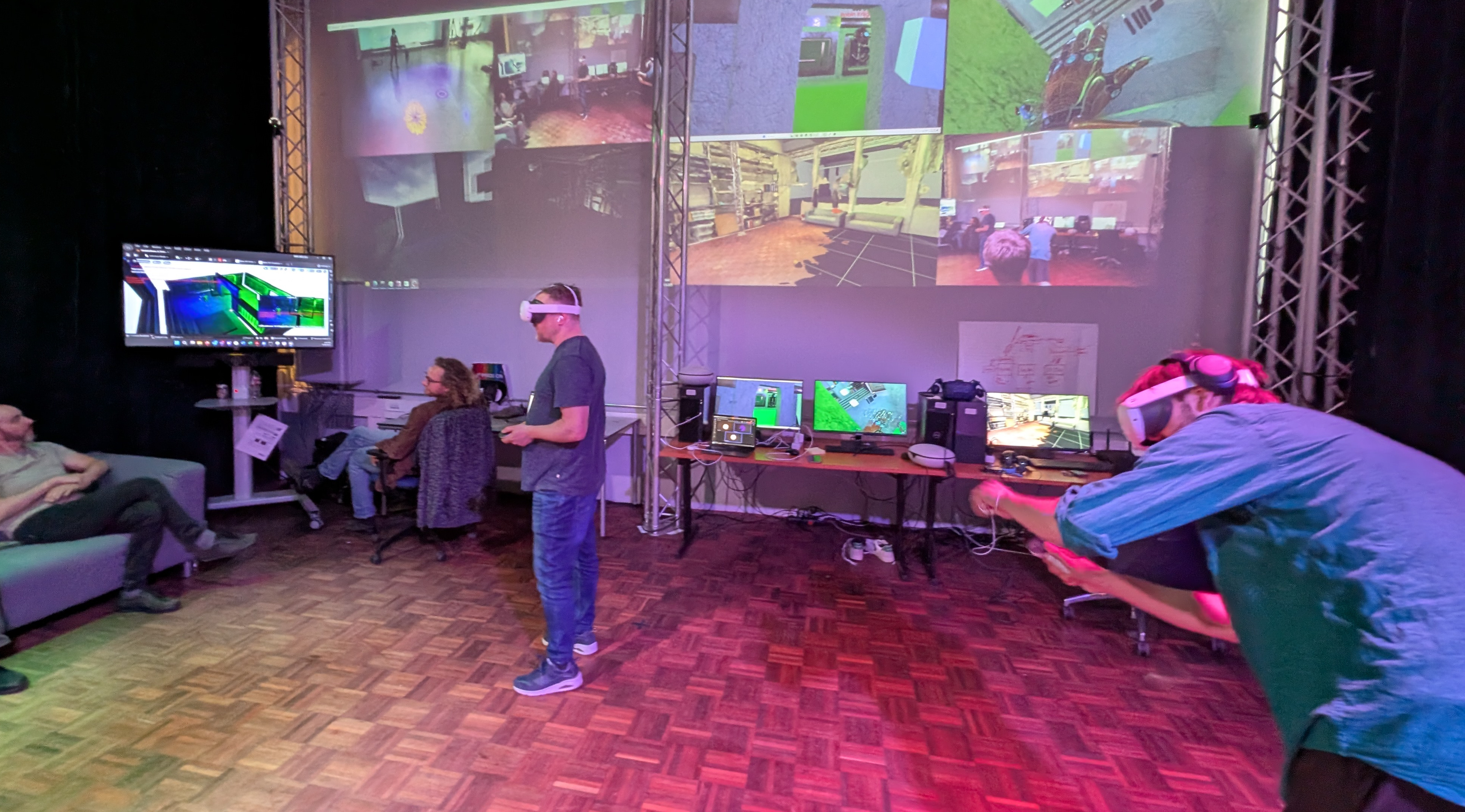A first exploration of co-located XR
At AXR Lab, we recently brought together artists, designers, and technologists from HKU and the Trans Realities Lab at Eindhoven Design Academy to experiment with co-located extended reality —a way to collaborate across physical distances using mixed reality, virtual production, and theatrical design. Our goal: to transform two separate studios into a single, interconnected labyrinth, blending virtual and physical spaces in real time.
The Experiment
Participants in both locations navigated a shared, mythical labyrinth using VR headsets, motion tracking, and spatial sound. Actors in Utrecht and Eindhoven moved together through the virtual space in Unreal Engine. Designers were able to reshape the virtual environment in Resonite, which impacted the environment in Unreal in realtime.

Technical setup of the Co-located experiment
The experiment explored how embodied interaction and spatial storytelling could create new forms of shared presence—even when collaborators are miles apart.
Lessons for the Future
As the project was divided over multiple locations (both physical and virtual), it underscored the need for clear communication channels, both technically (audio streams, translations between software) and socially (defined roles, structured improvisation).
Most importantly, the experiment showed that co-located XR isn’t about replicating physical interaction—it’s about inventing new ways to connect. The glitches and surprises became part of the process, revealing how hybrid spaces can spark unexpected creativity.

As we prepare for the next phase—this time with students from multiple institutions—we’re focusing on how to design these sessions to balance structure and spontaneity. This next experiment will take place at the end of October, and will connect participants between 3 locations: HKU, Eindhoven and the HU in Utrecht.
How can we use use these systems to generate creative opportunities? And how might these tools redefine exhibitions, performances, and classrooms? Stay tuned as we continue to explore the boundaries of shared digital spaces—where distance becomes just another dimension to play with.